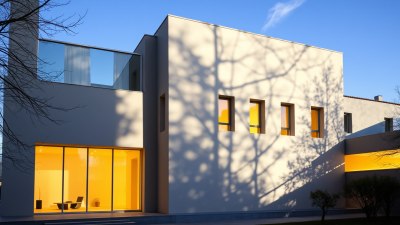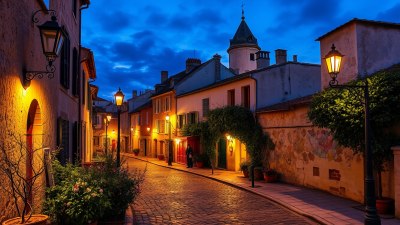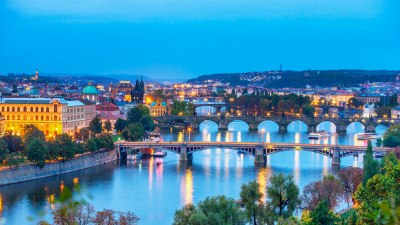Where the Architecture Glows and the Shadows Glisten
Explore stunning architecture where light plays with shadows in captivating designs.

Image created with Flux Schnell
The interplay of light and shadow in architecture creates compelling narratives that transform spaces into living art. Throughout history, architects have embraced the duality of these elements, sculpting buildings that not only serve functional purposes but also evoke emotions and provoke thoughts. In exploring the world of architecture where the glow of light mingles with the glisten of shadows, we discover not just aesthetic brilliance but also deeper meanings embedded within the structures themselves.
Several architectural styles showcase this beautiful dance of light and shadow. Modernism, with its clean lines and open spaces, often emphasizes natural light as a design feature. Buildings like the Villa Savoye by Le Corbusier exhibit large windows that frame the outdoors, allowing sunlight to radiate within while casting intricate shadows on the walls. The geometric simplicity of modernist architecture permits a seamless integration of light, creating vibrant interiors that change with the sun’s path.
Renaissance Perspectives
During the Renaissance, the understanding of perspective and natural light began to dramatically shift. An architect like Filippo Brunelleschi introduced techniques that transformed the architectural landscape by manipulating light and shadow. The Florence Cathedral's dome not only echoes the celestial sphere but also showcases how light can enhance architectural forms. The alternating bands of light and shadow on the dome create an ethereal experience, drawing visitors’ gazes upwards towards the heavens.
Brunelleschi’s work inspired a generation of architects to explore the use of chiaroscuro—not just in painting but also in architectural design. Light wells and strategic window placements allowed shadows to play across surfaces, creating dramatic effects. This technique is seen in many buildings of the period, such as the Palazzo Rucellai, where the façade’s stonework interacts beautifully with the changing light throughout the day.
Gothic Revival Inspiration
The Gothic Revival movement of the 19th century also leveraged the impact of light and shadow. Structures like the St. Pancras Railway Station in London illustrate this well. Its intricate details are accentuated by the interplay of light filtering through stained glass, casting colorful patterns on the floors as it shifts throughout the day. This captivating illumination transforms the dark stone into a vibrant spectacle, where shadows add depth and intrigue to every archway and alcove.
Through ornamentation and tall pointed arches, Gothic architecture enables a constant conversation between light and shadow, as seen in the mesmerizing details of the Notre-Dame Cathedral. Sunlight filtering through the iconic rose windows creates moments where the interior space glimmers with color, while deeper shadows heighten the dramatic effect of the structural elements. The sense of spirituality invoked by this interplay speaks to the sublime aspects of Gothic design.
Contemporary Integrations
In contemporary architecture, the integration of innovative materials has allowed for even greater exploration of light and shadow. The use of glass and transparency plays a vital role in modern structures, exemplified by the work of architects like Tadao Ando. His use of concrete combined with strategic openings permits a balance between solid forms and ethereal light. The Church of the Light in Osaka, Japan, showcases an extraordinary intersection between architecture and spirituality. The stark concrete walls, coupled with the cruciform opening that invites light into the space, results in an atmosphere of calm reflection as shadows deepen the sense of meaning.
Another example of contemporary brilliance is the Philharmonie de Paris by Jean Nouvel, where the exterior glows in the evening light, and the shadows created by its undulating surfaces appear dynamic and ever-changing. The building becomes a canvas for light, an extension of the music within, resonating with every note played. This interactivity emphasizes the role of architecture as a living entity, responding to the environment and actively engaging with its surroundings.
Sustainable Solutions
As the world moves toward sustainable architecture, the incorporation of natural light and the thoughtful design of shadows gain more importance. Bioclimatic architecture considers how to maximize daylight while minimizing heat gain, thus enhancing both the aesthetic and functional qualities of spaces. Structures such as the Bosco Verticale in Milan respond to their environment to optimize light while providing greenery that softens the sharp lines of urban landscapes. This vertical forest not only glows in sunlight but creates shadows that moderate temperatures for the buildings and their inhabitants.
Skylights, clerestories, and light tubes have surged in popularity as architects strive to fill interiors with natural light. These solutions prove invaluable in urban settings, where competing structures might limit daylight access. The clever use of reflective surfaces and angled configurations allows for an intricate play of shadows that can animate even the most minimalist designs while reducing dependency on artificial lighting.
Festival of Light and Architecture
Annual events such as the Festival of Light in Lyon further highlight how architecture shines in the interplay of light and shadow. During this festival, historical monuments are illuminated, and contemporary installations utilize light projections that assert architecture's ability to transform through color and brightness. The façade of the Basilica of Fourvière becomes a dynamic canvas, revealing stories hidden in the stonework and creating an enchanting experience for visitors.
Similarly, the annual lighting installations in cities like Sydney and Paris demonstrate how lighting techniques can reinvent architectural perception. We witness iconic structures such as the Sydney Opera House and the Eiffel Tower enveloped in shimmering light displays that celebrate their grandeur while reinterpreting their details, creating a tapestry of light and shadow that enchants audiences around the globe.
Artistic Inspirations
Light can be viewed as an artistic medium, where shadows become essential components of ergonomic design. Artists like Olafur Eliasson explore this concept in installations that prompt viewers to reconsider their relationship with light and spaces. In projects such as “The Weather Project” at the Tate Modern, Eliasson utilized artificial light to mimic the sun, encouraging interaction with light and shadow while promoting communal experiences within space.
Architects and artists draw inspiration from one another, pushing boundaries and merging disciplines. The collaboration often results in spaces that invite users to explore the depths of light and shadow further, merging the imagined and the real. This ongoing conversation elevates architecture from mere functionality to a form of art that resonates profoundly with human experience.
Philosophical Considerations
Philosophically, the discussion surrounding light and shadows in architecture prompts inquiries into presence and absence, clarity and ambiguity. The experience of entering a space where light dances with shadow can evoke introspection. Architects such as Louis Kahn believed in the soul of the space, emphasizing how light can reveal and conceal, impacting emotional response. He often spoke of the importance of light; spaces such as the Salk Institute become sanctuaries for thought, where shadows amplify moments of contemplation.
The nuanced tales told through light and shadow provoke deep reflections on past memories and future aspirations. They can be pervasive in creating atmospheres that range from joyful exuberance to serene tranquility, engaging occupants on multiple levels. Architecture becomes a vessel through which feelings and thoughts can be expressed, enhancing the overall human experience.
The Artistry of Light and Shadow
Ultimately, architecture where the glow of light meets the glisten of shadow continues to inspire awe. As we build for the future, balancing these elements becomes increasingly imperative. They serve not just as design components but as channels that connect us to nature and to each other. The emotional landscape shaped by light and shadow offers a glimpse into the profound beauty of architectural expression and its potential to transform our surroundings into captivating narratives. The dialogue between light and shadow serves as a testament to the creativity inherent in architecture, inviting us to explore, to dream, and to engage with the spaces surrounding us.











